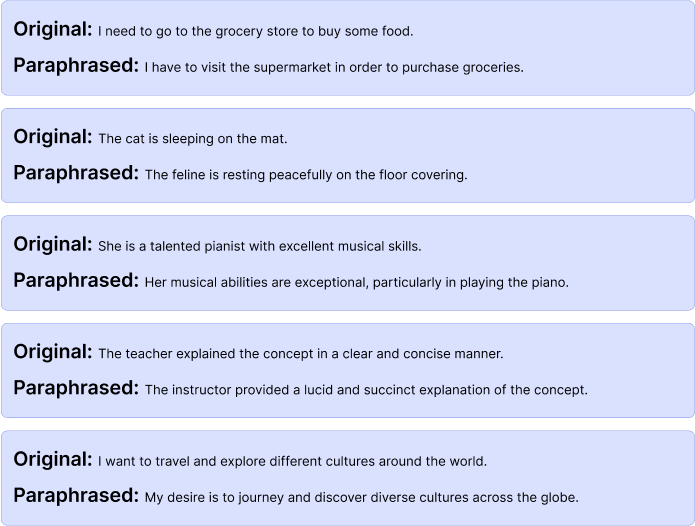Last update Jan 26, 2023

Paraphrasing is an important skill to master because it allows you to connect ideas, whether through note-taking or by restating someone else's work in your own words. Paraphrasing is also used in research papers and reports when you want to express a person's ideas or findings while still giving credit to where they came from. In this article, we'll explore paraphrasing tools, some of the best examples of paraphrasing, its importance, and how to use them in your own writing.
Paraphrasing is an important skill to master because it allows you to connect ideas, whether through note-taking or by restating someone else's work in your own words. When you paraphrase, you are showing an understanding of the topic and using that knowledge to further explore what makes it so compelling. You can use paraphrasing as a way of developing ideas by first explaining something from another perspective (a method called "extracting" or "gleaning"), then expanding upon those ideas through your own research and analysis.

Paraphrasing is a form of writing. It means you would write something down in your own words but with the same information as the original text. When you paraphrase, you are not plagiarizing because you have changed the words to make them your own. Paraphrasing is important because it helps students learn how to better understand what they read and remember what they have read for later use. Students should learn to paraphrase for several reasons: It helps students understand what they have read.
It helps students become better writers by teaching them how to make their own words sound more like those in a book or article.
It is an easy way for teachers to check whether students are plagiarizing by comparing their writing with the original text.
The summary is a brief restatement of the main idea of a text. It is not a rephrasing, summary, or summation of the author's ideas. Summaries are often used in business reports and research papers to summarize important points and present them in an organized way so that readers can quickly identify key ideas from your paper. Paraphrasing can help summarize information because it allows you to put words into your own style without copying someone else's work exactly as it is written into yours.
There are several different types of paraphrases based on how much you change or adapt an original piece of writing:
You may also paraphrase when you take notes from a reading and write them in your own words for your own study.
Paraphrasing is often used to create summaries of what you read, or even to understand and remember what you’ve read. It can be helpful for writing a report on a book or topic that has been discussed in class or by others.
When you summarize, paraphrase, or quote, you have to give credit to the author of the original text.
Paraphrasing in your own writing can help you avoid plagiarism, which is when you use someone else's words without attribution. Paraphrasing allows you to express your understanding of a topic in your own words, which makes it easier for readers to understand what you've written. When paraphrasing content from other sources, make sure that it's properly cited and referenced so that the original author gets credit for their work.
Paraphrasing in your own writing can also help you avoid redundancy. When you write something that is almost identical to something else you've written, it's hard for readers to tell the difference between the two pieces of content.
This post has helped you understand what it means to paraphrase. This is a very useful skill and one that you should practice in all areas of your life, not just school or work. Paraphrasing also helps us remember information better because, when we rewrite something in our own words, it becomes more familiar to us. A good paraphrasing example would be if you had to summarize an article or book. If you simply copied and pasted the entire thing into your own words, it wouldn’t be considered a paraphrase because it still contains someone else’s ideas.